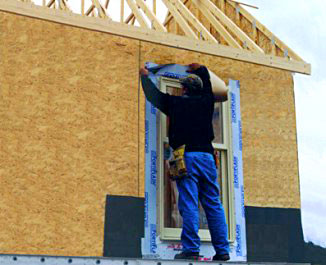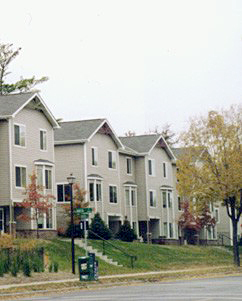January 30, 2001
Major Findings:

Report Summary
The lack of affordable housing in Minnesota has received considerable attention recently. Building new affordable housing is one way to address the problem. But builders, developers, and local housing organizations believe that several factors significantly limit the production of affordable housing. Despite these impediments, some affordable housing is being built—mostly with financial assistance and waivers from government regulations that otherwise would increase the cost of housing. We prepared this report at the request of the Legislative Audit Commission. The report describes and analyzes issues related to affordable housing but does not make policy recommendations.
Many Minnesotans Lack Affordable Housing
 A lack of recent data makes it difficult to establish the full dimensions of the housing situation in Minnesota, but according to summary data from the 1990 census, approximately 18 percent of all Minnesota households were in the "lower income" bracket and paid more than 30 percent of their income on housing. <FN-Homeowners are considered "lower income" if the household is at or below 80 percent of the median family income; renters are considered "lower income" if the household is at or below 50 percent of the median family income.>
A lack of recent data makes it difficult to establish the full dimensions of the housing situation in Minnesota, but according to summary data from the 1990 census, approximately 18 percent of all Minnesota households were in the "lower income" bracket and paid more than 30 percent of their income on housing. <FN-Homeowners are considered "lower income" if the household is at or below 80 percent of the median family income; renters are considered "lower income" if the household is at or below 50 percent of the median family income.>
When lower-income households spend more than 30 percent of their income on housing, little money is left over for other necessities. This benchmark is generally used, therefore, to define "affordable housing." In 2000, an "affordable home" is one that sells for $140,000 or less in metropolitan areas of Minnesota or $95,000 in non-metropolitan areas (where household incomes are lower). For renters, an "affordable" two-bedroom apartment is one that rents for $738 or less in metropolitan areas or $495 or less in other areas.
Home prices in Minnesota have risen much faster than inflation, which increased 27 percent between 1990 and 1999. During the same period, the median home sales price went up 61 percent statewide, and prices at the lower decile of the market increased 80 percent. Median household income, meanwhile, went up only 50 percent. Declining interest rates helped keep homes affordable during the 1990s, but available data suggest that some lower income households were having more difficulty buying a house. In addition, some people have difficulty finding affordable apartments. During the 1990s, average rent increased 34 percent in the Twin Cities area, while median renter income grew only 9 percent and the vacancy rate dropped to 1.5 percent.
Although far from definitive, some data suggest that the number of households having difficulty affording housing may be increasing. Individuals who earn the median wage in 13 of the 25 fastest growing occupations (including retail salespersons, cashiers, home health aides, receptionists, and food preparation workers) may have to pay more than 30 percent of their income for housing. For example, a retail salesperson who earns the statewide median wage ($8.06/hour) and lives alone could afford about $419 per month for rent (30 percent of income). The average rent for a one-bedroom apartment in the Twin Cities, however, is currently about $664. While many salespersons, particularly in the Twin Cities, earn more than the statewide median wage, they would have to earn $12.77 per hour in order to afford the average Twin Cities apartment. Although there are numerous strategies for finding suitable housing, such as living with a roommate, finding an affordable apartment might be increasingly difficult for growing numbers of low-wage workers.
New Housing is Expensive to Build and Often Unaffordable to Lower-Income Households
According to the most recent data, existing homes are often affordable for lower-income households. In 1999, lower-income households in 70 of Minnesota's 87 countries (including Hennepin and Ramsey counties) could afford an existing home selling at the county's median sales price. But new housing is generally less affordable than existing housing. Data from several sources suggest that a new, single-family, detached home with 1,100 square feet of finished space would cost at least $116,000 in 2000. This price is more than the $95,000 affordability limit for non-metropolitan areas but lower than the $140,000 limit for Minnesota's metropolitan areas. But many developers and builders contend that it is difficult to build a house for less than $140,000 in the Twin Cities area because land prices are so high.
New rental housing is also expensive to build. A basic two-bedroom apartment would cost at least $74,000 to build, and it would need to rent for about $950 per month to attract investors. Such an apartment would not be affordable to lower-income households in non-metropolitan areas, where the affordability limit is $498 per month, nor in metropolitan areas, where the limit is $738.
Opinions Differ About Factors that Limit the Production of Affordable Housing
Many people wonder why new housing is so expensive and what, if anything, the Legislature can do to increase the production of affordable housing. We reviewed the housing literature and analyzed survey responses from 439 developers, builders, and housing organizations to identify and assess the key factors that may limit the production of affordable housing. The figure shows the main factors we identified. While developers, builders, and local housing organizations generally disagree about the significance of each factor, they agree that the cost of land, labor, and materials (especially land) significantly limits the production of affordable housing. The variation in opinions reflects each group's role in producing affordable housing. Land developers are most concerned about land use policies, such as zoning and subdivision ordinances and growth management policies. Builders rank the building and fire codes relatively high because these codes dictate how they build housing. Local housing organizations are primarily concerned with financing issues because they play a major role in financing many affordable housing projects.
Factors That Limit Affordable Housing Production
|
While the factors noted above may limit the production of affordable housing, many factors serve an otherwise important public purpose. For example, zoning ordinances allow local governments to develop their communities based on local priorities. The building code ensures that housing is safe and well constructed. Taxes and development fees enable local and state governments to pay for necessary services. And the Metropolitan Council's growth management policy tries to encourage compact, orderly development in the seven-county Twin Cities area. In considering whether to remove or modify any of the identified impediments to the production of new housing, policy makers at all levels must balance competing goals.
Increasing the Production of Affordable Housing May Require Government Intervention
Despite the various factors that limit the production of affordable housing, some developers, builders, and local housing organizations are producing affordable housing in Minnesota and elsewhere. In many cases, government intervention allows them to do so. In fact, some developers, builders, and housing organizations say that obtaining government subsidies is a key ingredient to building affordable housing in Minnesota. While receiving zoning modifications and waivers from government regulation can also be an important strategy, it is used less frequently on a case-by-case basis.
Unlike Minnesota, some states have taken a prescriptive approach by requiring the development of affordable housing or mandating local governments to provide waivers from government regulations. In the mid 1990s, Minnesota rejected these types of policies in favor of an incentive-based, voluntary program for the seven-county Twin Cities area under the Livable Communities Act (LCA) of 1995. But the LCA has been only marginally successful in producing affordable housing. Specifically, the LCA rewards participation in the program instead of demonstrated progress in expanding the supply of affordable housing. Participating municipalities only have to negotiate affordable housing goals with the Metropolitan Council to become eligible to compete for funding provided under the program. Nevertheless, some Twin Cities area communities have focused additional attention on providing affordable housing because of the LCA. Currently, 104 of the area's 186 municipalities participate in the program, including Minneapolis, St. Paul, and nearly every major suburban city.
Summary of Agency Response:
In a response to the report dated January 18, 2000, Jay R. Lindgren, Regional Administrator of the Metropolitan Council described the report as "thorough and informative." He disagreed, however, with the report's finding that the Livable Communities Act (LCA) has been only marginally successful in producing affordable housing. Lindgren said that the LCA "has been very successful in encouraging local government to address affordable and life-cycle housing issues, [but] the LCA is not housing production legislation." Instead, he said, "LCA implementation has been about raising communities' awareness and commitment regarding affordable and life-cycle housing." Nevertheless, the 103 participating municipalities "have negotiated goals to add over 12,000 affordable rental units and over 64,000 affordable ownership units by 2010."
We offered the Minnesota Housing Finance Agency an opportunity to respond to our report, but they declined.
The Program Evaluation Division was directed to conduct this study by the Legislative Audit Commission in April 1999. For a copy of the full report, entitled "Affordable Housing (01-03)", 102 pp., published on January 30, 2001, please call 651/296-4708, e-mail Legislative.Auditor@state.mn.us, write to Office of the Legislative Auditor, Room 140, 658 Cedar St., St. Paul, MN 55155, or go to the webpage featuring the report. Staff who worked on this project were John Patterson (project manager), Craig Helmstetter, Lila Moberg, Susan Von Mosch, and Jo Vos.